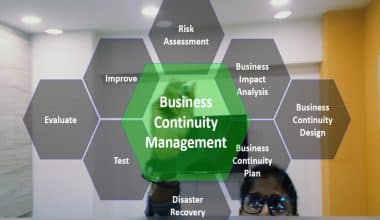Have you recently witnessed a doctor record anything on a patient’s medical chart? That’s possible because computerized note-taking in medical settings is now prevalent. Electronic medical records (EMRs) are used by a lot of healthcare facilities and providers to maintain crucial information about your health and well-being. In this article, we will be looking into the meaning of EMR systems, its top epic software, and finally, its training systems.
Emr Systems
These charts can thus be made, stored, and received by medical practitioners using EMR systems, which are software programs.
EMRs can save useful data about a patient, such as:
- Information on demographics
- Diagnoses
- Notes
- Information about medications
- Tab test outcomes
- Vaccination history
- Information on allergies
EMRs can be used for the following tasks in addition to recording and organizing patient data:
- Provide online patient portals for patients to access their medical information.
- Assistance with the drug prescription
- Used to place orders for specific laboratory tests
Thanks to built-in connections with coding and billing software, coding medical invoices is made simpler.
What Differs an EMR From an EHR?
Electronic medical records (EMRs) and electronic health records (EHRs) both contain patient data, however, EMRs are not made to be easily transferred to other healthcare facilities and providers like EHRs are. Instead of being utilized by numerous practices, EMRs are often used within a single medical office. People find it difficult to transfer their electronic medical records from one clinic, hospital, or office to another.
Advantages of an EMR
EMR systems offer a number of significant advantages to both healthcare professionals and patients, including:
- Lowering and avoiding medical mistakes
- Improving the effectiveness of routine tasks
- Improved staff communication and care coordination
- Faster and more effective overall treatment
Types of EMR Systems
The following are many subtypes of EMR systems that are utilized in various environments and with various operating systems:
#1. Certified EMR systems
Some EMR and EHR systems are certified, whilst others are not. Thereby, making the Office of the National Coordinator for Health Information Technology’s certification of a system knowing that it satisfies the strict functioning and security standards specified by that organization. The certification process is thus rigorous and serious. According to the U.S. Department of Justice, any violation or breach can result in a software supplier having their certification revoked along with other serious repercussions.
#2. Cloud-based EMR Systems
You can access information remotely with cloud-based software; you don’t have to be present in the workplace to see and recover files. Cloud-based EMR software typically costs less than on-premise systems because the software provider stores and maintains the servers off-site.
#3. Mental Health EMR Systems
Therapists, psychologists, psychiatrists, and other mental health practitioners are targeted by some EMR systems. Some EMRs contain particular capabilities, such as sophisticated note-taking and patient involvement, that are relevant to what mental health professionals require most.
Top Emr Systems
Your healthcare business will be forced to deal with a disorganized stack of paper records and patient charts that are tedious to even consider if you don’t have access to a complete medical software platform. The same is true for medical billing, which is significantly more difficult to understand than compiling and arranging medical notes, as any doctor will attest. For both small and large offices, medical software streamlines all these processes and many more. Our top options for medical software are shown below.
#1. Greenway Health Medical Software
Greenway Health offers a solution called Intergy that integrates its EMR and PMS technologies. Intergy charges $799 to $941 per user per month in addition to an additional $39 per person for HIPAA-compliant telemedicine. Among the products we studied, this price range is on the higher side. We found Intergy’s modifications and user preference tools to be the best available, thus these prices might be justified.
Intergy is simple to use and adapted to the area of specialization in your practice. It manages your most complicated billing requirements and automates your processes. As a result, a user-friendly scheduling suite and extremely accurate documentation are produced. Speaking of scheduling, Intergy enables multi-location calendar use and displays all of your patients’ due, overdue, and future health reminders, which is ideal if your practice currently has numerous facilities or expects to grow soon.
#2. Athena Health Medical Software
For healthcare businesses, Athenahealth is thus, the market leader in performance management and reporting. With athenahealth’s extensive options, practices searching for flexible, in-depth reporting and individualized consultation will be in good hands. You’ll also have access to all the tools a practice would require within the Athena health EHR system. The customized consultation offered by Athena health is one of its unique services. Athenahealth will thus get in touch with you to arrange a one-on-one meeting if your practice’s performance falls short of what similar practices are accomplishing.
#3. Kareo Medical Software
Unless you choose Kareo, medical software might be challenging to integrate and understand how to use. Kareo is without a doubt the most user-friendly medical software we discovered during our research, and even individuals who have trouble learning new things technologically won’t have much of a learning curve. We like using Kareo, and we loved that all of its tools and capabilities are available with every subscription package.
#4. DrChrono Medical Software
The purchase and installation of an electronic health record system as well as other medical technologies are only two of the numerous issues that must be attended to when opening a medical practice. Although DrChrono’s lowest tier doesn’t link with major lab providers, all tiers except the most expensive one incorporate electronic prescribing of controlled substances (EPCS) with your e-prescribing package for increased protection. Another DrChrono crutch that we found is that it only provides doctors with an iOS mobile application, leaving Android users out.
Emr Systems Epic
At clinics, doctor’s offices, private practices, and hospitals, paper records are also digitized or computerized counterparts of EMRs or electronic medical records. The patient’s chart is thus commonly referred to as an electronic medical record. The patient’s medical history from one practice is included in electronic medical records. They are also mostly used to diagnose and treat patients and contain data and records gathered by professionals at their workplaces, clinics, and hospitals.
EMRs are more important than paper records given the significance of data quality in healthcare since they enable healthcare practitioners to collect data over time, identify and monitor patients, and enhance the standard of care. Epic EMR systems are thus a private software development firm for telemedicine. The majority of Epic’s services are towards creating medical software. Due to the high cost of telemedicine software, Epic also develops, approves, maintains, and sells specialized, low-cost electronic medical records software programs.
Software for managing medical assets is thus one of the capabilities offered by the software provider. The Chronicles data management system serves as the foundation for Epic’s healthcare software. The company’s applications give customers access to a number of patient care-related features, such as registration and scheduling.
How Does Epic EMR Systems Work?
It was altered to be integrated with Epic’s software so that they could use their own Cache Database, which is mainly a more customized version of the Cache Database used by another company. The database was created solely for speed, dependability, and agility. It functions according to a hierarchy.
MyChart, another patient portal service offered by Epic, is very user-friendly and enables patients to rapidly access information about their own and their family’s health. Moreover, patients can text or call their doctors, make appointments online, complete questionnaires, and actively participate in their own health management.
Prospective patients can easily schedule online appointments with MyChart to become new patients. Patient portals have a lot of advantages and disadvantages. Yet, because of its user-friendly interface and ease of use for patients, Epic’s MyChart feature outweighs the drawbacks of patient portals.
When a patient is admitted to the hospital, another service by Epic called MyChart Bedside enables them to keep in touch with their healthcare team, evaluate their schedule, have access to personalized patient education materials, and ask for help from their healthcare providers.
Is the Epic Systems an EMR?
Several organizations across the country choose Epic as their primary EMR system. EMRs are electronic patient records. The customizable dashboard of Epic EMR allows doctors to access their profiles, much like other work portals. Moreover, doctors can access charts and use the Epic “Note Writer” tool, which enables them to annotate charts. Also, they can combine their notes with their patient’s medical information using Epic EMR for future reference.
What is the Purpose of Epic Systems?
Large hospitals and practices mostly utilize Epic Software to gather, organize, store, and also distribute digital medical records.
Who Uses Epic Systems EMR?
Epic EMRs, or electronic medical records, are used mostly for diagnosing and treating patients. They contain data and records gathered by physicians at their offices, clinic, or hospital. Read the guide on the EMR software’s estimated worth.
How does Epic Systems Work?
Epic is a private software development firm for telemedicine. Medical systems development services are primarily provided by Epic or Epic EMR. Operations related to patient care are supported by Epic Systems, including scheduling and new patient registration. For doctors, physicians, paramedics, and other healthcare professionals, complex systems are available. It also serves as a software provider for medical image processing, including solutions for radiologists, pharmacists, and lab techs in addition to billing tools for insurance staff. Epic’s medical technology Users receive meaningful and pertinent experiences thanks to UX design. Safety and documentation are given a lot of consideration in Epic’s UX design process for medical equipment.
Emr Systems Training
For long-term success, even the best-planned EMR installation projects must have a similar component. To migrate to electronic medical records and fulfill Meaningful Use EMR criteria, one aspect must be implemented: a successful client training approach.
A medical facility or small clinic switching to an ONC-approved and certified EMR system may benefit from EMR incentives. But, it is also crucial that the executives in charge of managing the electronic medical record training processes are aware of the specific requirements and current skill levels of their team.
EMR Trainers
It may be simpler to abstract patient medical charts and deploy an EMR if an EMR vendor offers clients on-site electronic medical records training classes. Occasionally, a small group of office personnel may be sent to the vendor’s location for training on electronic medical records. Depending on the size of the client’s office, there may be several approaches to electronic medical records training. The entire workforce may be able to participate in the initial comprehensive EMR software training procedure in smaller practices.
EMR trainers frequently teach a small group of people to be super-users for larger medical institutions and offices. This EMR training method has the advantage of lowering costs and minimizing missed time at work for the rest of the team.
In-house EMR trainers are often superior teachers for the group since they are more familiar with the practice’s culture and workflow environment. In order to provide end users with an EMR trainer they can learn from in their own unique environments, super-users that represent the many areas of the medical practice should be selected.
EMR Systems Training Program
A training program should include strategies for fitting training into the everyday schedules of medical personnel and ensure that every participant may attend uninterrupted training sessions in some capacity. Participants should be given time slots to learn the fundamentals of how their particular aspect of the EMR system works.
Due to the various modules that must be learned, including scanning, charting data entry, electronic prescriptions, lab results, and EMR dictation training, gradual training is typically required.
Leaders and super-users occasionally create simplified training cheat sheets for end users to help them understand how to complete tasks without having to sift through a large manual for instructions, even though the vendor will provide a complete and comprehensive electronic medical record training manual.
Users may find recorded visual demos provided by the EMR vendor to be useful for subsequent education and reference. The core EMR training program may be supplemented with the usage of available online training resources.
Post Live EMR Systems Training
Training for electronic medical records shouldn’t end with their installation. Super-users and employees must continue their EMR training in order for the ongoing transition to occur as smoothly as feasible. If offered, user conferences and seminars hosted by the specific EMR software vendor can be attended by in-house electronic medical record training leaders to maintain their education and training.
To improve their expertise, they can also ask for more training or online courses from the provider of EMR software. Leaders and super-users need to regularly evaluate how well their workforce training is using the new EMR systems.
What is the Most Popular EMR System?
- NextGen: Best for Population Health Management.
- Allscripts: Best for Large Organizations.
- DrChrono: Best for Medical Billing.
- Kareo: Best for Small Practices.
- eClinicalWorks: Best for Telehealth.
What are the 2 Advantages of EMR?
Advantages of electronic health records:
- At the point of care, providing complete, accurate, and current patient information.
- Facilitating fast access to patient records to facilitate better coordinated and effective care.
- securely exchanging electronic data with patients and other medical professionals.
How Many Different EMR Systems are There?
Finding the best EMR software company from the over 600 available is difficult.
Relative Posts
- What is B2B Sales? 15 Best Strategies for B2B Sales Lead
- Practice Management Software: Definition & Top Picks
- REMOTE MONITORING: What It Is, Application and Jobs
- WHAT IS MEDICAL BILLING AND CODING: Understanding the Meaning, Process and Course
- TRAINING PLAN: What Is It, Example & How to Create One






